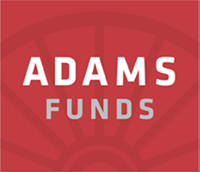The oil industry has changed significantly over the past five years due to growth in U.S. shale production driven by innovations in drilling. Adams Funds analysts, Greg Buckley and Mike Kijesky, provide their take on the current state of the Energy sector and the variables that will influence performance over the near-term.
October 4, 2018

The rapid growth in U.S. shale-oil output contributed to a global oversupply of oil. This led to the price of oil falling from over $100 a barrel in 2014 to below $30 in early 2016. Oil prices have since recovered due in part to OPEC’s agreement to reduce production. Do you see the higher price levels as sustainable?
Given the improved supply/demand situation, we believe that current price levels are sustainable although could be influenced by several moving parts. The continued unrest in Venezuela and Libya, as well as the effect of renewed oil sanctions on Iran are variables that could affect supply. On the other hand, the impact of higher tariffs between the U.S. and China and softness in emerging market economies could weigh on global economic growth, which would impact the demand for oil. Other unknowns include whether OPEC will remain committed to limiting oil production in the face of rising prices, as well as the production levels of U.S. shale companies. All said, we believe the current underlying fundamentals of the market support an upward bias in oil prices.
Integrated oil companies, energy companies with diversified operations in exploration, production, marketing, refining, transportation and distribution, have lagged the broader Energy sector this year. What is driving this and what is your outlook on this group?
Integrated oil companies invest in large, multi-year projects with long payback periods. As oil prices rise, these companies tend to ramp up investment activity. Conversely, when oil prices fall, they generally pull back on spending. With oil at $100 a barrel, many of the integrateds were aggressively pursuing new projects. When oil prices fell, the returns on these projects compressed.
With the recovery in oil prices, integrateds are now benefiting from the investments made earlier in the cycle and are generating strong free cash flow. However, investors fear that higher oil prices will translate into aggressive spending. There is mounting pressure for management teams to remain disciplined. In response, several integrated companies, such as Chevron and Royal Dutch Shell announced new buyback programs, which were well received by the market. Overall, we believe integrated oil companies are well positioned with improved expense structures and should benefit if oil prices remain over $60 a barrel. And if these companies continue to return capital to shareholders, that should provide an additional tailwind to the sector.
Do you think companies will remain focused on spending discipline against the backdrop of higher oil prices?
We believe this is the biggest question overshadowing the sector. In response to growing pressure from investors last year, many exploration & production (E&Ps) companies committed to what were largely viewed as shareholder-friendly actions. Many companies announced plans to limit spending to current cash flow and, in some cases, decided to return cash to shareholders in the form of buybacks. These commitments were central to the recovery of energy stocks in early 2018.
However, in August 2018 the market began questioning this commitment when several E&P companies raised capital-spending guidance for the year. Many of those who signaled that they would be increasing capital expenditures fell out of favor, while the market generally rewarded those demonstrating continued spending discipline. If history is a guide, it becomes increasingly difficult for energy companies to maintain spending discipline as the price of oil rises. Our focus is on those E&Ps who remain disciplined with their capital spending as prices climb.

The rapid growth in shale production in the Permian basin has outpaced pipeline investments which has led to bottlenecks in the region. How long do you expect it will take to facilitate improved pipeline capacity? And what companies do you see as the long-term winners in the Permian?
The takeaway issue in the Permian Basin was caused by rapid production growth without commensurate investments in pipeline capacity. This led to a large differential between Midland and Gulf Coast pricing. The price gap has historically been less than $5 a barrel, but it rose to $15 a barrel in August 2018. Although several additional pipelines are currently under construction, which should alleviate the bottlenecks, it will take at least until the second half of 2019 before they become operational.
There is also the chance that pipeline construction will run into delays due to a tight labor market, or rising project costs related to recently enacted steel tariffs. This could lead to slower production growth, wider oil-price differentials, and ultimately lower earnings in 2019 for companies with significant exposure to the Permian Basin.
Against this backdrop, we recently consolidated our investments in this sector to favor companies with less emphasis on the Permian, such as Marathon Oil, EOG Resources, and Continental Resources. We also believe companies that benefit from the wide differentials, like Occidental Petroleum and certain refining companies like Marathon Petroleum, are well-positioned for the environment. Longer term, the Permian companies offer some of the most compelling opportunities and once infrastructure constraints are rectified, we will be interested in increasing our exposure to this area.
Refiners have performed well over the past year, benefiting from strong oil demand and widening crude price differentials. What drives continued outperformance in this group?
We believe refiners will continue to generate strong returns. This will be driven by three primary factors: persistent crude oil price differentials, environmental mandates, and solid capital management. We also see a favorable cyclical outlook due to robust global growth for refined products.
In terms of environmental mandates, the International Maritime Organization (IMO) created a rule in 2016 to combat air pollution from the shipping industry. The rule limits the amount of sulfur allowed in shipping fuel and goes into effect in 2020. The regulations will increase demand for distillates that require higher refining capabilities, which will drive demand for refiners.
And finally, based on a strong outlook for refiners, cash flow should continue to be robust. Given that refiners have returned 92% of net income to shareholders during the past five years, and that management teams remain committed to returning capital going forward, we expect refiners to continue to generate strong results. We see Marathon Petroleum and Valero as being well positioned to benefit from these trends.
